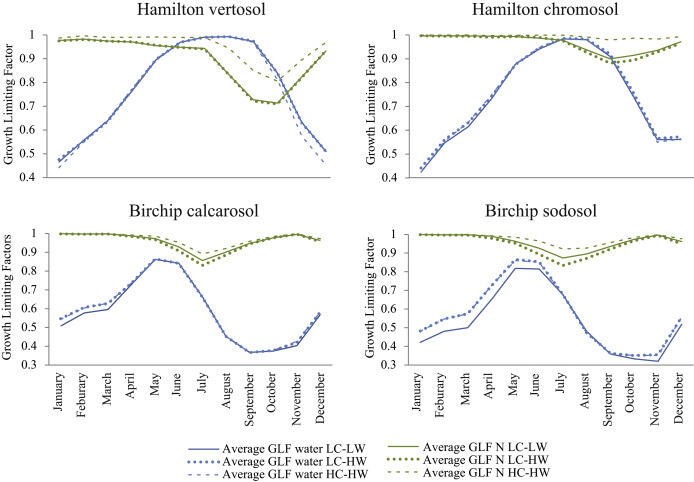Process modelling to assess the sequestration and productivity benefits of soil carbon for pasture

Authors: Rachelle Meyer; Brendan R Cullen; Ian R Johnson; Richard J Eckard
Abstract: Soil carbon is often cited as having potential to provide both climate change mitigation and adaptation benefits. Given the extensive ecosystem service benefits of soil organic matter (SOM), including increasing N supply and plant-available water-holding capacity (PAWHC), we hypothesized that on-farm benefits provide ample justification for maintaining high levels of SOM, separate to its carbon sequestration potential. To investigate this we used whole-farm system modelling to simulate pastures with high SOM (initial carbon amount similar to long-term pasture) and low SOM (initial carbon condition similar to long-term cropping). These scenarios are deliberately confounded with land use change, as this allowed for comparison of the mineralization, PAWHC, and associated productivity benefits on high and low carbon soils with the same management. Low-carbon soils were modelled with two amounts of PAWHC to investigate the importance of this effect in isolation. These three scenarios (one high carbon and two low carbon with differing PAWHC) were run for two climatic zones each with two soil types. Across both climatic zones and soil types, soil C accumulated at a rate of 0.30-0.48 t C ha-1 year-1 (0-30 cm) over the first 20 years in soils with low initial carbon amounts. On soils in a high-rainfall climate, annual pasture production in low-SOM soil was 560 to 900 kg DM ha-1 less than for high-SOM soil, attributable primarily to increased N mineralization (68 to 77 kg N ha-1 year-1) overcoming an N limitation in spring. On low-rainfall sites, a reduction in annual pasture production of 280 to 770 kg DM ha-1 on low carbon soils compared to high carbon soils was attributable to reduced PAWHC. The increased pasture production associated with higher SOM was valued between AUD 26 and 95 ha-1, across the soils and sites. The entire value on low-rainfall sites (AUD 26-85) was attributable to differences in PAWHC, while on high-rainfall sites, increased pasture production was attributed to N mineralization valued from AUD 85 to 105 ha-1. These results indicate that soil carbon sequestration, through increased SOM, can provide substantial on-farm benefits that contribute to future productivity.
Citation: R. Meyer, BR. Cullen, IR Johnson, RJ Eckard (2015) "Process modelling to assess the sequestration and productivity benefits of soil carbon for pasture", Agriculture, Ecosystems and Environment (2015), pp. 272-280, DOI: 10.1016/j.agee.2015.07.024
URL: http://www.sciencedirect.com/science/article/pii/S0167880915300384